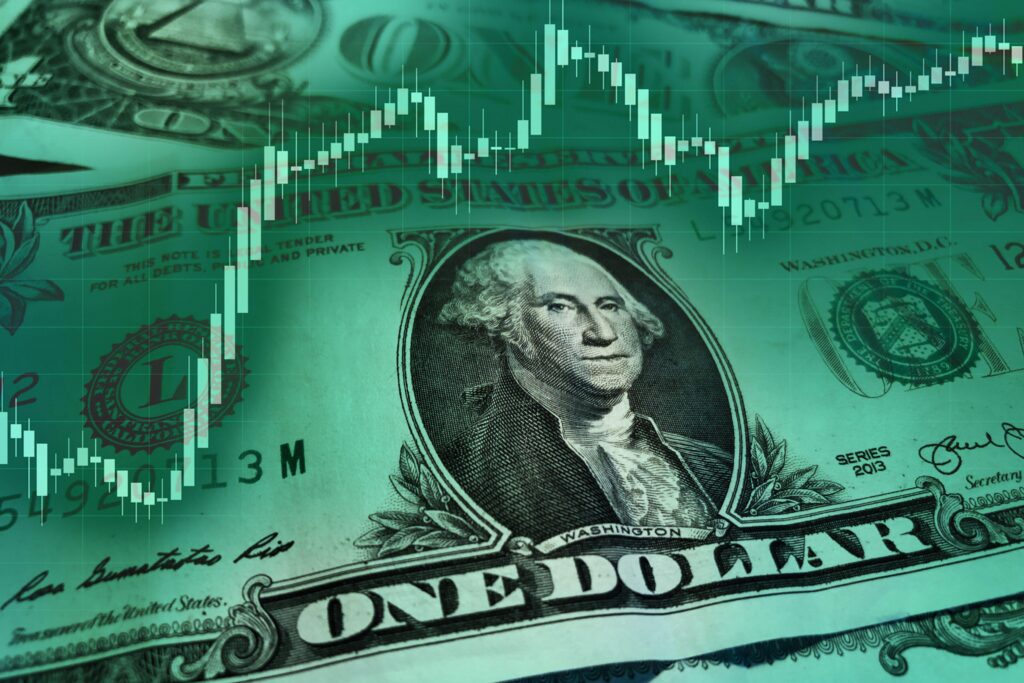
(Source from Reuters/Alamy)Dollar Preference Even in the U.S. Market Crisis, Dollar Concentration After the COVID-19 Pandemic
The damage comes at the expense of emerging economies, which are vulnerable to the economy.It’s not even a financial crisis, but the exchange rate is strong by one dollar. With the dollar continuing to strengthen against major currencies, the U.S. stock market has also fallen sharply and volatility remains. As the dollar is strong for all currencies, it is difficult to dismiss it as a problem only for each country’s currencies.
Triffin’s Dilema, named after Robert Triffin, an American economist, must still be in effect. The dollar has long served as a key currency since the gold standard was abolished. The reserve currency must be reliable and supply sufficient, but in reality, these two goals conflict.
For example, only when the U.S. makes a trade deficit can the dollar, which is the key currency, be supplied sufficiently. However, if the U.S. continues to run a trade deficit, skepticism about the U.S. economy grows, and trust in the dollar is broken and the status of the reserve currency is shaken.
Conversely, if the U.S. makes a trade surplus, other countries will have to bear the burden of the trade deficit, and the global economy will not be funded due to a lack of dollars, which could lead to a recession. Deepening this dilemma could be a factor in the crisis. Macroeconomics has a thing called ‘Impossible Trinity’. In theory, no country can achieve these three goals at the same time: free capital movement, fixed exchange rate system (exchange rate stability), independent financial policy. Rather, there is a conflict between them.
For example, let’s raise interest rates independently when free capital movement is guaranteed. Then, as capital flows in due to interest rate hikes, the exchange rate appreciates and exchange rate stability is damaged. If you want to maintain stability in your own exchange rate, you should use a Capital Control policy, which undermines the goal of free capital movement pursued by the International Monetary Fund or the Organization for Economic Cooperation and Development. Usually, capital control is any form of measure that a country’s government can use to regulate the inflow and outflow of capital through capital accounts. In contrast, the IMF defines all measures designed to affect capital inflow and outflow as capital flow management measures (CFMs).

(Source from Reuters/Alamy)Citizens hold a rally in the Philippines on July 4 to demand lower rice prices amid inflation in the global economy.Concerns over capital outflows from emerging economies emerged after the 2008 financial crisis due to the high-intensity U.S. interest rate hike, and the IMF also recognized capital inflow and outflow management measures, which were taboo before. Many emerging economies hate short-term speculative capital coming in like high tide and undermining the stability of financial markets. As a result, in the case of Brazil, taxes (aka Tobin tax, now abolished) were imposed on short-term capital inflows. It was intended to sacrifice one of the goals of the “impossible trinity.” Since then, as the U.S. raised interest rates due to the strong U.S. economy, the problem of capital outflow has arisen in emerging countries. When the COVID-19 pandemic broke out. The huge liquidity supply of central banks around the world, including the United States, has created a super-large milkshake.
Is history reproduced? In order to absorb the increased liquidity due to COVID-19, the U.S. took baby steps, big steps, and giant steps in 2022. The IMF feared that emerging economies could face capital outflows and declines because the U.S. rate hike eventually linked to the flow of exchange rates. Why does the dollar go up when it’s constantly printing dollars?
U.S. investor Brent Johnson expects the dollar to rise if the Fed raises interest rates, and a strong dollar will suck up investment funds from around the world to the U.S. In the meantime, the U.S. Fed has excessively supplied milk shakes called liquidity.
Now, in front of the monster of inflation, the U.S. Federal Reserve is trying to absorb the milkshake by inserting a large straw. When the Fed cuts interest rates and quantitative easing (QE), fresh milk is injected into milkshake bottles. As a result, global liquidity flows into emerging markets, high-risk bonds and stock markets.
On June 27, a gas station in Colombo, Sri Lanka’s capital, blocked the vending machine because it had no gasoline in stock. Since then, citizens waiting for gasoline supply have lined up and armed soldiers are guarding it.
The U.S. austerity policy is creating a dark cloud over the global economic trend.
Since the COVID-19 pandemic, price bubbles have appeared in all directions, including real estate, stocks, bonds, and bitcoin, due to overflowing liquidity. Now, the Fed is inhaling milk shakes by picking up unprecedented large straws and raising interest rates to prevent inflation and enhance financial stability. The dollar funds return to the mainland of the U.S., high-yield bonds in emerging markets, where risks have increased due to interest rate hikes, and funds are withdrawn from the stock market and headed to the stable U.S. government bond market. The dollar’s strength further fuels it further. So I’m worried. In the global financial market, the direction of fund flow may change and negative signs may appear.
Let’s say the dollar continues to strengthen. First of all, given the total amount of dollar-based debt around the world, the burden required to pay only interest on it increases that much. Furthermore, the dollar still accounts for an overwhelming proportion of global trade. Even if the euro, yen, and yuan are all combined, it is less than a third of the dollar.
In the meantime, the demand for U.S. government bonds is still high. If the interest rate on U.S. government bonds continues to rise, its attractiveness can increase further. It is horrifying to hear that the U.S. absorbs the world’s capital by inserting straws. The U.S. dollar is the world’s key currency. The monetary policy of the U.S. central bank is bound to affect the economy not only in the U.S. but also around the world. If the world thinks that the U.S. dollar is the least dirty shirt than the quasi-stimulus currency country’s currency that implemented easing monetary policy, it will inevitably be forced to wear it. The dollar’s status is weakening, but it still accounts for more than 60 percent of the world’s foreign reserves. The dollar’s share of global trade is gradually decreasing, but it still accounts for about 40 to 45 percent. The bond market also accounts for 60 percent of the total. One way or another, the world is shaken by the injection and inhalation of dollar milkshakes. When the U.S. stock market was good, the dollar milkshake theory could exert its power.
Even though the U.S. market is shaking now, the dollar milkshake theory is still valid because of the preference for safe assets that only dollars can be trusted. It was the United States that caught fire during the global financial crisis. Since then, the sacrifice has been attributed to emerging economies that have been slow to restructure. How’s it going after the pandemic? Will Asia and developing countries be able to respond efficiently to these safe assets?
JULIE KIM
ASIA JOURNAL

